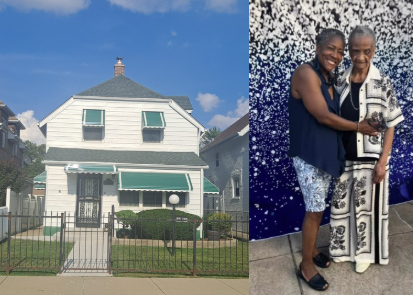Beyond the Numbers: The Non-Energy Benefits of Energy Savers
What do we talk about when we talk about energy efficiency? Often, we talk about energy savings. For example, Energy Savers, a one-stop energy efficiency program for owners of multifamily buildings, has retrofitted more than 15,000 units, saved 10 million kWh hours and 21,000 metric tons of carbon dioxide from gas, and secured $11.4 million in loans from Community Investment Corporation.
But there are other positive consequences of energy efficiency improvements not reflected in the amount or cost of energy saved. These benefits, which are not related to energy savings, are called non-energy benefits. Non-energy benefits affect utilities, tenants, building owners, the environment, and society.
CNT Energy is researching non-energy benefits, with the goal to quantify and measure benefits and demonstrate how energy efficiency work preserves affordable housing. CNT Energy surveyed tenants at three multifamily buildings owned and operated by Bickerdike Redevelopment Corporation that have gone through the Energy Savers program.
Both building owners and tenants surveyed said they benefit from Energy Savers in ways beyond energy savings. This includes financial security, tenant retention, and safety and comfort.
Increased financial security is a notable non-energy benefit. Tenants reported that they felt more confident paying electric and gas bills after energy efficiency improvements had been made to their building. Most tenants reported that they struggled with paying heating and cooling bills in the past, but now noticed lower electric and gas bills.
Michael Burton, the asset management director with Bickerdike Redevelopment Corporation, explained another non-energy benefit of Energy Savers: savings allow building owners to look beyond immediate operations and short-term management costs and increase the financial security of the building as a whole. When Bickerdike’s older buildings were underwritten years ago, expenses increased 4 percent year over year while income increased by 3 percent annually, Burton said. And, until recently, expenses like taxes, insurance, and gas outpaced these rates. “So basically they’re now on a little better footing because of a capital infusion to replace capital improvements and also they do a little better in terms of setting money aside for reserves for repairs and capital replacements,” Burton said.
Tenants also like to discuss the improvements made to their building. When moving to a new building, tenants said overwhelmingly that they would now inquire about any energy efficiency measures in place or underway. Which means: efficiency has value for tenants. Building owners can capitalize on this value when marketing their properties, helping to improve tenant recruitment and retention.
Many tenants reported that they were unaware that energy efficiency work was happening at their building. Minimal disruptions from improvements contribute to increased tenant comfort. One tenant reported that after her building underwent improvements, the conditions in her unit during the winter were “warmer and not as drafty.” Tenants also reported that they felt safer in their building after energy efficiency improvements had been completed. For example, improved lighting in common areas can increase safety.
Stay tuned and follow us on Twitter or Facebook for updates. CNT Energy will present more on non-energy benefits this winter.



